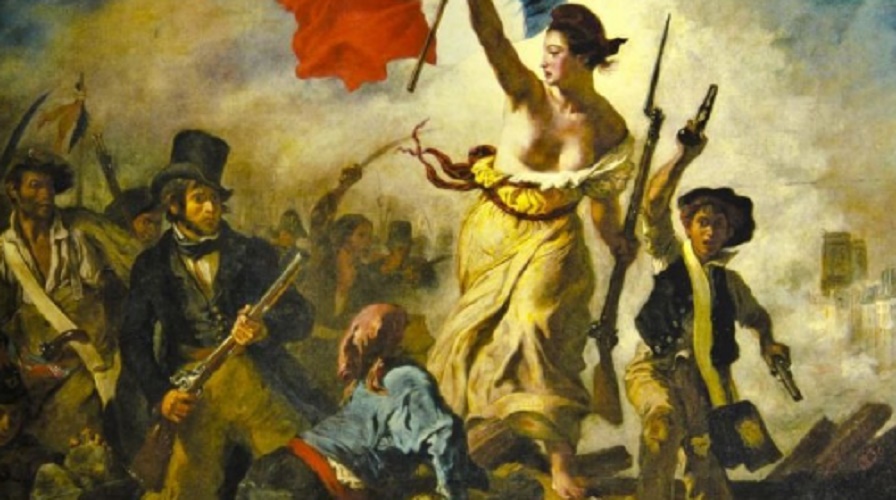What is equality?
We explain what equality is, its relationship with discrimination and equity. In addition, equal rights, gender and social.
-
What is equality?
The word equality means, according to the Royal Spanish Academy, the ” principle that recognizes the equalization of all citizens in rights and obligations.”
This means that before the law , all citizens would have to be equal and be measured with the same rod, so that we all have the same opportunities to receive rewards, or to be punished for our misconduct . Unfortunately, this is not always the case.
Equality is the opposite of inequality, which is one of the evils that afflict humanity since its earliest times, in which the presence of not only poor and rich, noble and commoners, but even slaves who were treated as merchandise.
There have always been organized movements and struggles around the conquest of equality , which, in comparison, seems much closer in our day than in the past. However, there are still forms of discrimination , that is to say, to apply criteria of legitimation or exclusion to citizens in a selective manner, that is, in an unequal manner.
There are known cases in which the rights of minorities are formally or informally limited, especially those economically disadvantaged, such as migrants , minority races and religions, or even women, exercising the law unequally.
Against it fight multiple social groups, civil movements and even international and non-governmental organizations , gathered under the dream of a mute future more egalitarian, that is, more just.
Now, when we talk about equality, we can be talking about many forms of equality (or inequality), depending on the nature on which discrimination is based: sex, race, socioeconomic status, etc. Next, we will explore some of them.
-
Equality right

The struggle for equality does not contemplate, as some people seem to believe, the idea that we should all be identical and that some individuals should be prevented from excelling based on their talents or their virtues, or even the inheritances of their predecessors.
On the contrary, the social struggle in this sense pursues equality before the law, that is, the right to equality: that all citizens are measured with the same, identical rod, regardless of who they are or what stratum of the Population come.
This fight has distant and important antecedents. In the French Revolution of 1789 for the first time a charter of fundamental rights of the human being was promulgated , inspiration for the subsequent Universal Declaration of Human Rights carried out by the United Nations Organization.
But despite the fact that this declaration ensures the equality of all human beings before the law, many groups need to continue given the struggle for their right to equality in sectors of society and culture often unsuspected.
Be that as it may, the right to equality means that every human being has identical treatment before the law , with the same opportunities to defend himself, to be judged according to the same interpretations of the law, in a fair manner, without paying attention to details that could tip in advance the scales of justice in their favor, or against them.
-
Equality and equity
These two terms are often treated as synonyms, although they are not really. By equality, as we have said before, we understand the uniformity before the whole, that is, the application of the same measures and the same principles in the judgment of some, in the judgment of others.
On the other hand, equity has to do with justice, based on the recognition of inequalities that already existed beforehand , to be truly equanimous. This means that if equality proposes “to all according to the same criteria”, equity proposes “to each according to their needs and to each according to their abilities.”
There is the difference between the egalitarian and the equitable: the latter implies starting from a situation of inequality, to try to correct it or at least not increase it. In that sense, equality and equity can be really complementary , since the second is a way to reach the first.
-
Gender equality

Gender equality means that both men and women should be considered equal for the purposes of law enforcement , the allocation of rewards for work done, or the punishment for broken laws. That is, that the law is applied equally without distinction of sex and that the rewards for the same work done are always the same.
This claim for equality between men and women arose in modern times of humanity. It is because for much of our history the woman found herself on a step of inferiority before the man .
For example, it was considered spoils of war , it was denied political or even economic participation ( Athenian democracy , for example, did not consider them as citizens; but neither did they have the right to vote in Western democracies until practically the twentieth century), and educated them to submit to male designs.
This, thanks to the successive feminist waves , has been changing in our contemporary societies, but it is still a matter of debate today.
-
Equal opportunities

Similarly, the idea of equal opportunities states that all human beings, regardless of race, sex, creed or nationality, would have to come into the world with the same opportunities to grow, strive and receive the rewards of their effort. , thus accessing social welfare and their full political rights.
This is an idea that is often ignored when talking about meritocracy, the supposed social and political organization in which those who accumulate the greatest merits will hold the greatest decision power.
The problem is that if we do n’t all come to the world with the same opportunities , how can we be judged equally? And in the same way, how could we judge the merit of someone who came into the world with all their needs met, and that of someone who had first to fight to satisfy himself?
In many cases, the State exists as a guarantor of equal opportunities , which is why it controls public education, public health and other benefits that descendants of disadvantaged classes could not access, not for lack of merit, but for reasons of another kind.
-
Equal rights
Equal rights are, more or less, the same as the right to equality, only as seen from a legal perspective. Equal rights are the foundation of any justice system: all citizens of a State are equal before the law .
Citizens submit to the law voluntarily and absolutely, because they trust that legal institutions exercise it without distinction, which is why it is often said that “justice is blind.”
Finally, social equality is the condition of total equity among the citizens of a State , in which they enjoy the full satisfaction of their civil, legal, economic and political rights (their fundamental human rights) as equals. That is, social equality equals the sum of equality before the law, equal opportunities and equal results (punishments and rewards).
Social equality is obviously the opposite of social inequality , which takes place when the criteria of socialization in a community are exercised in a discriminatory way: attending to race, religion , sex, sexual orientation, age, language or some other condition that serves to deny the just reward, the deserved service or, even worse, the minimum rights.




